- Let’s start with the bank's financial results. In 2019, the DBK has more than tripled its net profit to about KZT 11 bln. However, as of the first half of this year the bank recorded a loss of about KZT 20 bln. What factors contributed to this result?
Yes, indeed, the bank suffered a loss in the first half of the year. It should be noted that the coronavirus pandemic has made adjustments not only in the activities of the Development Bank of Kazakhstan, but also in the activities of all companies around the world. Of course, the DBK was no exception in this regard. The Bank assessed the negative impact of the pandemic on the economy of Kazakhstan and on the activities of our borrowers, and we were rather conservative in this regard. Additional provisions have been created for our portfolio. It should be noted that we operate in accordance with IFRS 9, which was implemented in 2018 and which focuses on forecast data. All forecasts, especially macroeconomic data, have become negative due to the pandemic. Accordingly, this has also been noted in the calculation of our provisions.
In fact, this was the main factor in the decline in the bank's profit for the first half of 2020.
- What is the Bank undertaking to reduce the negative impact of the pandemic on its business?
When the pandemic had just begun, the Bank did a lot of work to analyze its loan portfolio, stress tests were conducted for absolutely all our borrowers, and as a result we developed an anti-crisis plan. In this plan, we have outlined the actions that the Bank plans to take to improve the situation and help our borrowers in such difficult times. On a quarterly basis, the Bank monitors all the actions specified in this plan.
- What actions are we talking about?
We have divided our customers into three categories. The first group includes those borrowers of the Bank who need assistance from the Bank. We take various measures in accordance with our mandate and our instruments, including restructuring of loans. We are also working with the relevant ministries, where the government can provide certain assistance to our borrowers.
- You mentioned a loan restructuring. What is the current share of foreign currency loans in the bank's loan portfolio and liabilities?
I would like to say right away that all our foreign currency loans are related. In other words, the liabilities that we undertake are tied to certain loans. In this way, we neutralize the imbalance in terms of currency risks. If we look at the structure of our liabilities, today approximately 44% of our liabilities are in foreign currency. In the case of loan portfolio, there are approximately 46% of loans in foreign currency. We have a very conservative policy on managing currency risks, and we always hold a neutral currency position.
- Due to the recent serious devaluation of the national currency, the rating of Kazakhstan's second-tier banks has also changed. Does the DBK plan to change its approach to interbank financing? And will you reconsider your deposit strategy?
The Bank has already done it after the events of 2017-2018, when a number of banks had their licenses revoked. We have completely changed the procedures for interaction with banks, implemented a mechanism to analyze financial stability of second-tier banks, and based on this data we take managerial decisions on working with commercial banks.
Our main interaction is the interbank lending. Its share in the DBK portfolio is insignificant - about 6,5%, which is approximately KZT 120 bln.
We are implementing several programs together with second-tier banks. The first is support for domestic manufacturers, i.e. the creation and expansion of new production facilities, implementation of smaller projects that do not fit the mandate of the Development Bank of Kazakhstan. The second area is car loans. As you know, after the launch of this program, many Kazakhstanis were able to get domestic cars on fairly favorable terms. These programs have been implemented since 2015. During this time, about KZT 365 bln. has been provided through them.

- In the current environment, many development institutions and other organizations are likely to change their priorities. How will the priorities of the Development Bank of Kazakhstan change under the new agenda?
Of course, the pandemic could not but affect both our strategic goals and short-term plans. In particular, the Bank is working to amend and update our 2014-2023 strategy.
We have a number of initiatives to improve our strategy. One of the tasks we now face is helping customers overcome the consequences of the pandemic. As I have already said, we will use various tools that the Bank can use. These are restructuring, providing available financial resources and so on.
We will also pay more attention to financing those sectors of the economy which are strategically important for Kazakhstan and which have been affected by the COVID-19 pandemic. This is mainly the manufacturing industry. One of our priorities is to finance value-added projects, deeper redesign. We are talking about companies that are not just producing raw materials and exporting them, but also producing finished goods that will enter domestic and foreign markets.
- In February, the DBK placed its third issue of Eurobonds in KZT. Does the bank plan to raise funds on foreign markets as early as this year? What are the risks of raising money abroad in the current conditions?
Indeed, this issue is denominated in KZT, i.e. all currency risks were assumed by foreign investors. We are proud that the Development Bank was the first to open this market to Kazakhstan. Not only are we among the first, we also place Eurobonds on very favorable terms. The conditions we used to place on foreign markets are comparable, and even slightly lower in profitability than on the domestic market.
Of course, the pandemic will have a significant impact on external borrowing not only for the bank, but also for any issuer that plans to enter international markets. This is primarily due to the risk assessment of developing countries by foreign investors. In my opinion, they will now take into account all risks: currency, country and liquidity risks in the creation of Eurobonds yield. I think that in the near future it will not be quite profitable to enter international markets for liquidity. We are talking about liquidity in KZT, where foreigners can take our currency risks. If we talk about foreign currency, then markets are open here. Now the situation is leveling off, and rates are falling.
But the Development Bank holds a very conservative policy. We do not borrow money for no special reason, we borrow for certain projects. We plan all our plans to attract liquidity in line with our lending plans.
- How does the bank position itself, when it enters foreign markets for financing? What are the main advantages of the bank compared to other development institutions?
We position ourselves as a development institution that is supported by the government. The Bank participates in the implementation of strategic government programs, such as State Program for Industrial and Innovative Development, Nurly Zhol, support for domestic manufacturers and so on. For these purposes, we receive money from the republican budget. If necessary, the government periodically capitalizes us to maintain our financial stability. This clearly demonstrates the great importance of our work in developing the economy of Kazakhstan. Rating agencies, while keeping our rating at a high level, confirm this.
- How do you assess development prospects of Kazakhstan stock market, given the emergence of AIX? Will the existence of two stock exchanges contribute to the revival of securities market?
This is a good and rather complicated question. In general, the appearance of the second exchange will probably have a positive impact. An element of competition between exchanges plays a role here.
In any case, two questions arise. The first question is the range of issuers and securities on exchanges. Work must be done to ensure that more issuers go to these exchanges and issue securities. A privatization plan and IPO of quasi-government companies would be very helpful in this direction. If you look at the past experience, Kazatomprom has conducted an IPO, and quite successfully. We need to step up our efforts in this direction.
It is also necessary to expand the range of investors, as well as attract foreign ones. AIFC exchange looks more attractive here because English law is in force there, and this is more understandable for investors. In other words, they are protected and know all their rights, and maybe they are ready and willing to enter the Kazakhstan market. But the problem is how this will be done. These questions can be answered by implementing settlements through systems such as Euroclear and Clearstream. Both KASE and AIFC exchange are now working with these companies, and part of the functionality has been launched. But it is still necessary to expand the functionality so that foreign investors can enter our market. If this is done, I think that our stock market has good prospects for development.












